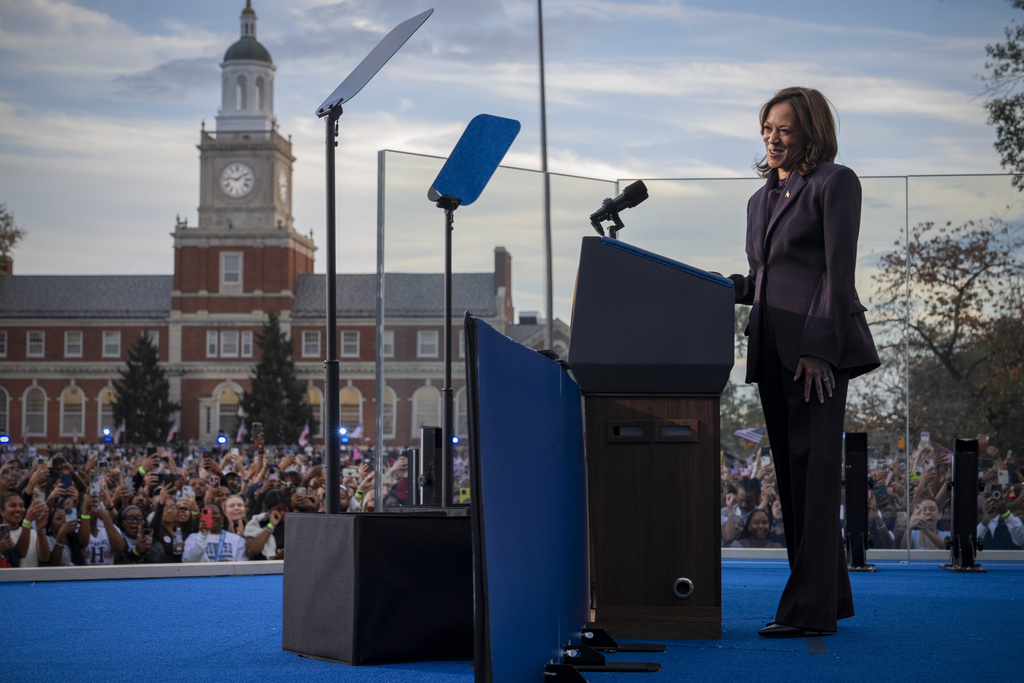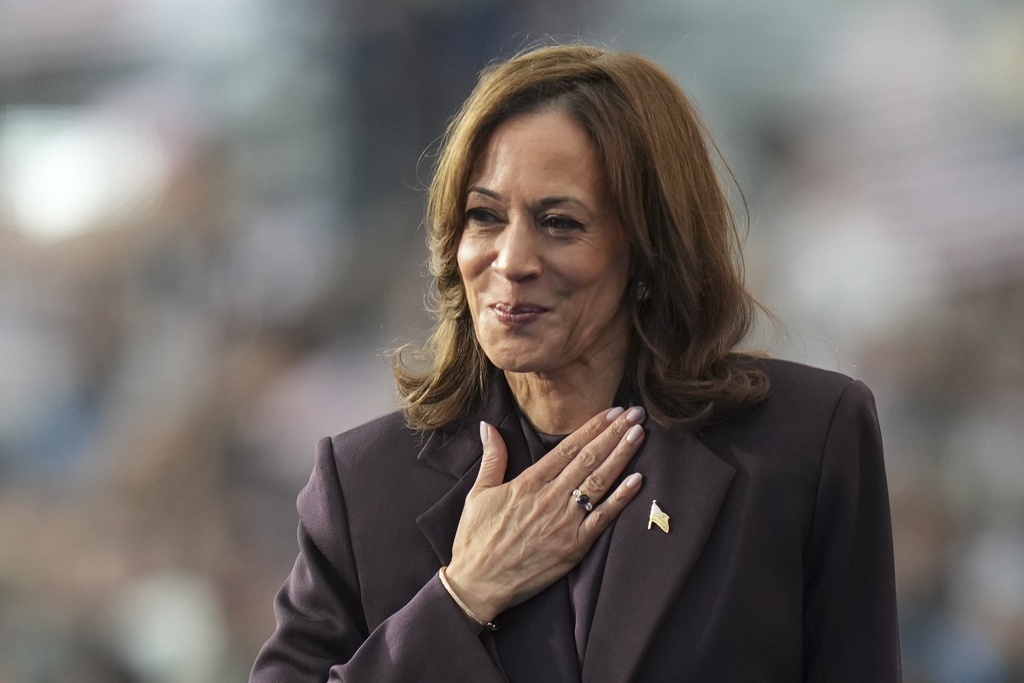Harris Campaign Faces Fundraising Push After Election Loss \ Newslooks \ Washington DC \ Mary Sidiqi \ Evening Edition \ Despite raising over $1 billion, Kamala Harris’ campaign faces financial pressures after her loss to Donald Trump. The campaign is aggressively fundraising post-election, targeting small and large donors. This scramble highlights the cost of modern political campaigns and the challenges Democrats face in preparing for the 2026 midterms while countering the Trump administration.

Harris Campaign’s Fundraising Push: Quick Looks
- Massive Fundraising Effort: Harris raised over $1 billion but continues soliciting donations post-election.
- Targeted Appeals: Focused messaging emphasizes Trump’s administration picks and unresolved congressional races.
- Costly Campaign Tactics: Events with celebrities and ads in unique venues, like Las Vegas’ Sphere, added significant expenses.
- Post-Election Strategy: The “Harris Fight Fund” is rebranded to galvanize support for broader Democratic efforts.
- DNC’s Role: Most donations benefit the DNC, not Harris’ campaign directly, raising transparency concerns.
Deep Look
Post-Election Fundraising: A Strategic Necessity
Since Election Day, Harris’ campaign has sent out near-daily fundraising appeals to supporters. These messages avoid directly addressing potential debts but instead focus on galvanizing donors around issues like Trump’s controversial cabinet picks and unresolved congressional races.
For example, shortly after Trump announced Matt Gaetz as his nominee for Attorney General, Harris supporters received an email urging donations to the “Harris Fight Fund.” The message described Gaetz as someone who would “weaponize the Justice Department” and emphasized the urgency of fighting Trump’s agenda of “revenge and retribution.”
These emails reveal a dual purpose: addressing immediate financial needs while rallying Democrats to prepare for ongoing battles against Trump’s administration and future elections.
A Costly Campaign with Lingering Expenses
Despite its substantial fundraising, the Harris campaign struggled to keep expenditures in check. Lavish events featuring celebrities and musicians, coupled with ambitious ad campaigns in unconventional locations like Las Vegas’ immersive Sphere, significantly added to campaign costs.
Adrian Hemond, a Democratic strategist from Michigan, confirmed that the campaign has reached out to him for fundraising assistance post-election. “The Harris campaign certainly spent more than they raised and is now busy trying to fundraise,” he noted.
The Role of the “Harris Fight Fund”
Central to the campaign’s post-election fundraising is the rebranded “Harris Fight Fund.” Previously known as the “Harris Victory Fund,” this joint fundraising committee benefits Harris’ campaign, the Democratic National Committee (DNC), and state Democratic parties.
While the fund’s messaging implies a direct link to Harris’ efforts, most donations from small-dollar contributors are routed to the DNC. According to the fine print:
- The first $41,300 from individual donors and $15,000 from PACs go directly to the DNC.
- Subsequent contributions—up to $3,300 from individuals and $5,000 from PACs—are allocated to Harris’ recount account.
- Any remaining funds, up to legal limits, are distributed among state Democratic parties.
Balancing Financial Realities
While Harris campaign officials have downplayed concerns, challenges persist. Patrick Stauffer, the campaign’s Chief Financial Officer, issued a statement emphasizing that there were “no outstanding debts or bills overdue” as of Election Day. He also assured that neither the campaign nor the DNC would report debt in their upcoming Federal Election Commission filings.
However, financial uncertainty remains. Vendors are still submitting invoices for late-stage campaign activities, including media organizations billing for travel on Air Force Two during Harris’ campaign events. These pending expenses complicate efforts to fully assess the campaign’s balance sheet.
DNC’s Role and Future Strategy
For the DNC, maintaining financial stability is critical as the party seeks to counter Trump’s administration and prepare for the 2026 midterms. The Harris campaign’s experience highlights the immense costs of modern campaigning and the need for robust fundraising infrastructure to sustain political operations between elections.
Lessons from the Campaign
The financial challenges facing Harris’ campaign underscore the high stakes of political fundraising in the current landscape. Even with record-breaking donations, campaigns often run deficits due to the escalating costs of advertising, staffing, and event production.
Democrats are now grappling with how to allocate resources effectively while preparing to challenge a resurgent Trump administration. The party’s ability to maintain momentum will hinge on its fundraising success and strategic planning in the months ahead.
Looking Ahead
As Harris and the Democrats navigate this new phase, their success—or failure—will provide valuable insights into the evolving nature of political campaigns. With the 2026 midterms on the horizon, the lessons learned from 2024 will likely shape the party’s strategies moving forward.
Harris Campaign Faces







